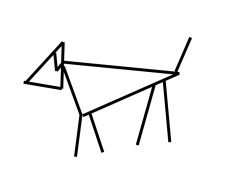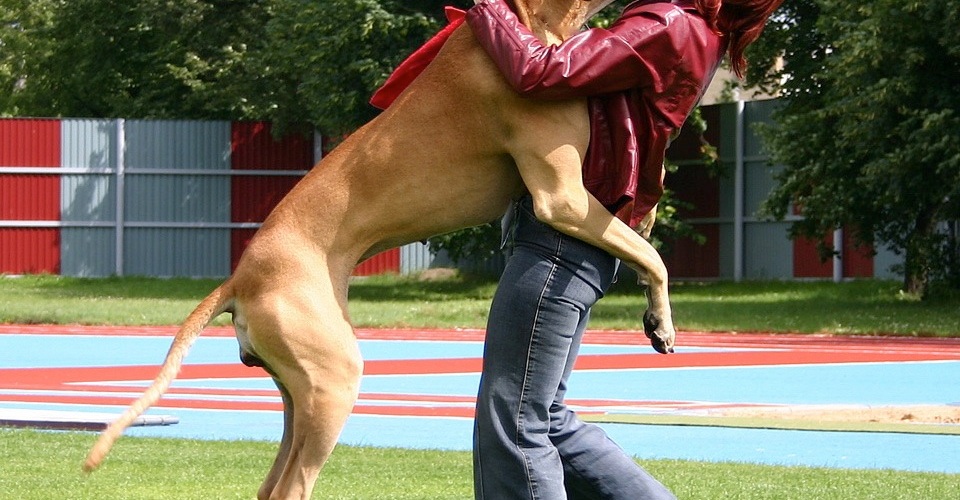Sometimes I think I’m not super social…I often prefer to stay at home curled up on the couch than go out. But then again, I know how to greet other people, have a conversation and generally act in a socially acceptable manner. I know how to do these things because I observed other people from a young age and my parents and others were always there to guide and teach me. Now pretend I’m a dog. This paragraph is totally applicable whether you’re of the human or dog variety.
What is socialisation?
When people say a dog is “well socialised”, it means that the dog is aware of the “correct” way to act in dog society. Believe it or not, dogs have a fully functioning society just like ours, where actions, reactions and body language make a world of difference. If someone new you’ve just met sticks their hand out, you know you’re supposed to shake it. If a dog is well socialised, they know to expect that other dogs will go in for a butt sniff. From greetings, to displays of affection, submission and play, a well socialised dog knows the ‘language’ and doggy rules of these interactions.

Atlas has always known the greyhound ‘dialect’, but he’s now learned the global dog language.
A more subtle part of socialisation is teaching dogs how to interact with things that aren’t dogs. That includes other (non-dog) animals, weird things like vacuum cleaners and most importantly, people. The critical period for socialisation is 3-12 weeks of age, so much of this crucial time may be out of your hands if you are buying an older dog, and even sometimes when buying a puppy. While the socialisation period is the point at which dogs are most malleable, adult dogs can certainly be re-shaped to some extent, depending on the history of the dog.
Spotting the Social Butterfly

It’s hard to believe that this fat slug was ever an over reactive dog.
For us, it’s relatively easy to identify a person that’s socially awkward. When you know the signs, it’s just as easy to see it in dogs. Particularly in the case of older adopted dogs, you may not know their history, so you need to observe their behaviour closely. Firstly, categorise their personality;
outgoing & curious dog
If your dog is outgoing and curious, how does he react to unexpected things, new people and unfamiliar dogs? Does he a) take it in his stride and remain chill or b) become nervous, agitated or overly excited? If a, you’ve got yourself a well adjusted, perfectly socialised dog – congrats! If b, you’ve got work to do.
OR
reserved, quiet dog
If your dog is shy and anxious, it’s likely they haven’t been very well socialised. If this nervous behaviour leads to aggressive responses when stressed out, this can pose serious problems, particularly if you’ve got kids around.
Socialisation for Dummies
Socialisation exercises can easily be applied to both puppies and adult dogs, and it’s equally important for both. Puppies and adult dogs that have lead a sheltered life to date need exposure to the world, just like babies. Here are some important exercises to start these naive pups on their journey to explore the world…
DOGS
Help your dog learn that other dogs come in all shapes and sizes, different breeds, ages and temperaments. It’s best to start with other dogs you know are friendly and will tolerate a puppy. Be aware that if both dogs are on lead, they are likely to be more stressed out. Puppies are likely to be immediately submissive to adult dogs, and will learn appropriate reactions and behaviours by watching and interacting with adults. This can often include warning growls from the adult – keep a close eye, but don’t intervene unless there is serious cause for concern, as most adults will simply remove themselves if annoyed. It’s also good to have puppies play with other pups, who will match them with behaviours like play fighting.
PEOPLE
Show your dog that people can be big or little, normal or very strange and very nice to have around. This is key to minimising aggression directed towards both your family and visitors. Have everyone in the family involved in training your dog – every person is a potential source of delicious treats! Teach them that humans aren’t always quiet and that’s ok. Have a bunch of friends around and ask them to talk loudly for 30 seconds, then return to talking quietly. Treat, treat, treat. Weird stuff happens but it’s nothing to worry about. Meet your friend at the park and have them give your dog a treat – strangers happen to carry their favourite treat! While ensuring your children know how to act appropriately around a dog (e.g. no ear pulling, screaming, taking food, etc), show your dog that these tiny humans are a) above them in the pack (control resources like food) and b) can be loud and smelly but aren’t anything to be afraid of.
EXPERIENCES
Unless you plan to leave your dog in a backyard its entire life (please for the love of dog, no), it needs to understand that the big bad outside world ain’t so bad at all. That means introducing pup to car trips, waves at the beach, the sound of a hair dryer, something loud being dropped, having their toe nails clipped….etc, etc, etc. Unless you have shown your dog something before, they have no idea whether it’s going to kill them or be the best thing ever, just keep that in mind. For example, reassure them that the car isn’t a monster by letting them get in and sniff around before even going anywhere. Once they’re ok with that, go for a 2 minute drive and give them a super amazing crazy jackpot treat. They’ll soon learn that something they weren’t sure about is definitely in the “best thing ever” category.
When The Damage Has Been Done
Research has suggested that lack of adequate socialisation as a puppy leads adult dogs to display unwanted behaviours like aggression towards other dogs and people, play biting, destructive tendencies, possessiveness, excessive barking and undue fearfulness (Pierantoni and Verga, 2007). Unfortunately, many of these dogs then end up in a shelter, looking for a new home. So what happens when you get a dog that’s missed the boat on puppy socialisation and has a bunch of bad behaviours? Train, train, train.
For example, if an adult dog is terrified of men, you can easily train them to enjoy and look forward to meeting them. All you need is patience and an unbeatable reward (see our blog on training for more info on training methods). Invite the boys around and have them all approach your dog and offer the treat – rinse and repeat, with different people, inside, outside, at the park. Teach them that men are actually are an exciting, delicious thing instead of something to be afraid of. The same can be applied to other dogs and experiences and can also be applied for dogs that are at the other extreme (over reactive); in this case, reward calm behaviour instead!

Atlas enjoying some quality time with his honorary blackandwhitehound friend, Kane the Dane
The best piece of advice for re-socialising adult dogs is go slow. When we first adopted Atlas, who had not been socialised with any dog except other greyhounds, we thought he would never be ok around other dogs. His hackles went up when within eyesight of another dog, so we knew it would be a long process. We started by going to the local dog park and watching dogs from across the street for 5 minutes a day, every second day or so. We focused on treating him and eventually, directing his attention back to us and away from the other dogs.
After a month or so of this, we moved up to the fence, allowing him to sniff other dogs. More rewards for every second of good behaviour. Another few weeks got us inside the dog park with Atlas still on lead, so we could easily remove him if necessary. In short, 6 months after we got him, Atlas passed his greenhound behavioural assessment, which meant that the assessors were confident he showed no aggression, fear or other undesirable behaviour around other dogs. So our beautiful social butterfly finally emerged from his cocoon; all it took was a little love and a lot of patience.
If you have any questions about socialising your dog, ask us!
With love,

References
L. Pierantoni, M. Verga (2007). 5: Behavioral consequences of premature maternal separation and lack of stimulation during the socialization period in dogs. Journal of Veterinary Behavior: Clinical Applications and Research, 2(3); 84-85
S. Arai, N. Ohtani, M. Ohta (2011). Importance of Bringing Dogs in Contact with Children during Their Socialization Period for Better Behavior. Journal of Veterinary Medical Science, 73(6); 747-752











